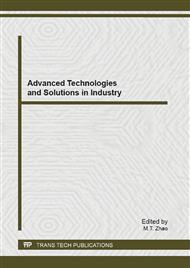p.337
p.342
p.348
p.352
p.358
p.362
p.367
p.372
p.376
Advanced FEM Analysis of Steel Pitched-Roof Portal Frames with Tapered Members
Abstract:
Steel pitched-roof portal frame with tapered web elements is one of the most commonly used type of structural system low raised buildings where large free spans are required. In practice it is found that the most efficient solution is generally obtained by using tapered web elements, whiles the flanges are kept prismatic. Besides its economic and structural advantages, this refinement brings additional designing challenges for structural engineers: high slenderness of its resulting cross-sections and the uncertainty of results caused by the increased difficulty of a thorough calculation of the resistance to lateral-torsional buckling of tapered I-section elements. If no lateral restraints, or when they are not effective enough, the lateral torsional mode characterizes the global behavior of frame members or interaction with sectional bucking modes may occur. As slenderer sections they are more sensible to buckling (local and global) as well as more sensitive to imperfections than compact sections. The paper summarizes a numerical study performed by authors on a relevant series of such type of elements. Different types of lateral restraints have been considered along with a variety of patterns of initial imperfections. A sophisticate nonlinear inelastic FEM model was built and different imperfections were used to simulate the behavior of the frames.
Info:
Periodical:
Pages:
358-361
Citation:
Online since:
June 2013
Authors:
Price:
Сopyright:
© 2013 Trans Tech Publications Ltd. All Rights Reserved
Share:
Citation:


